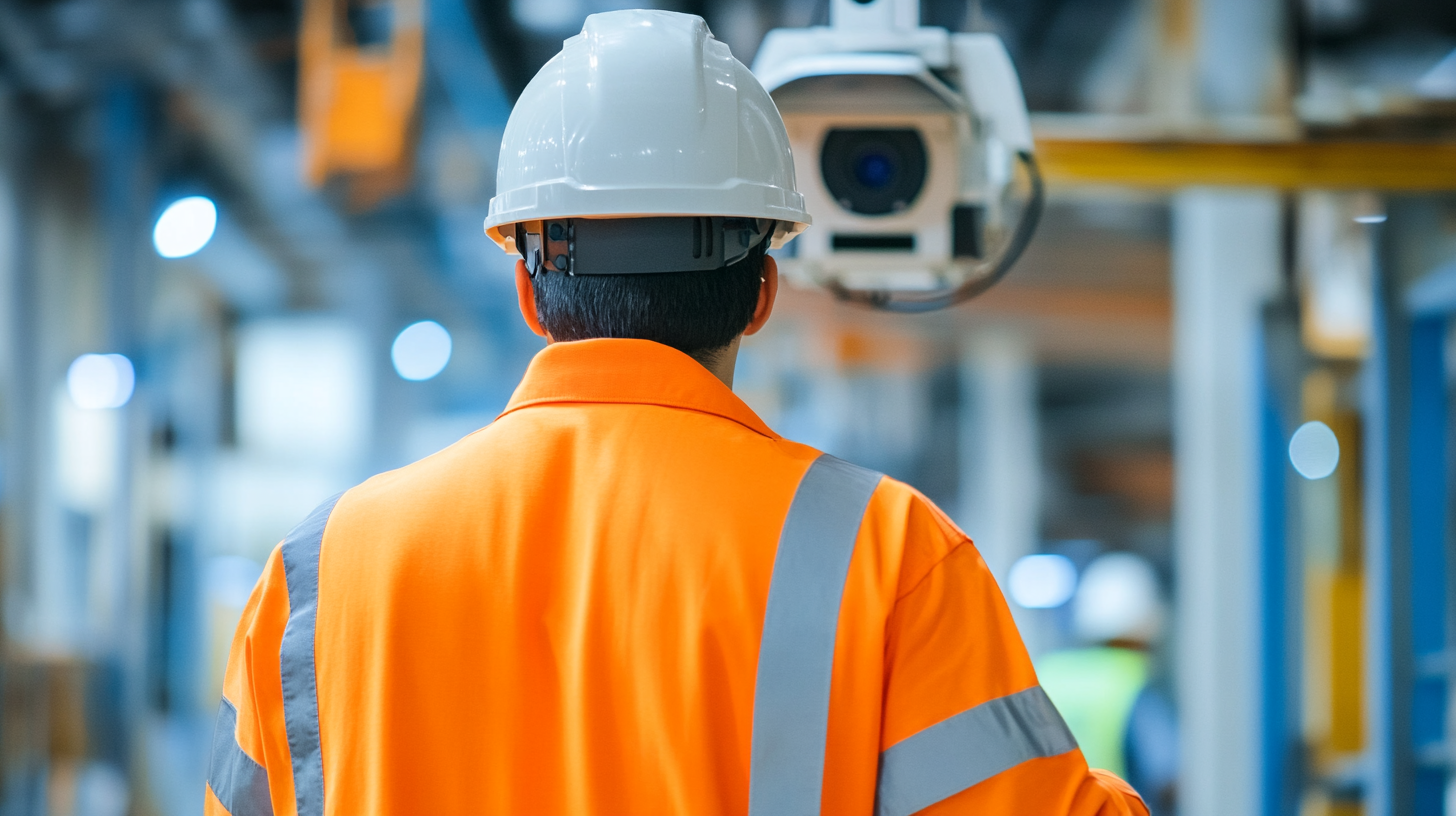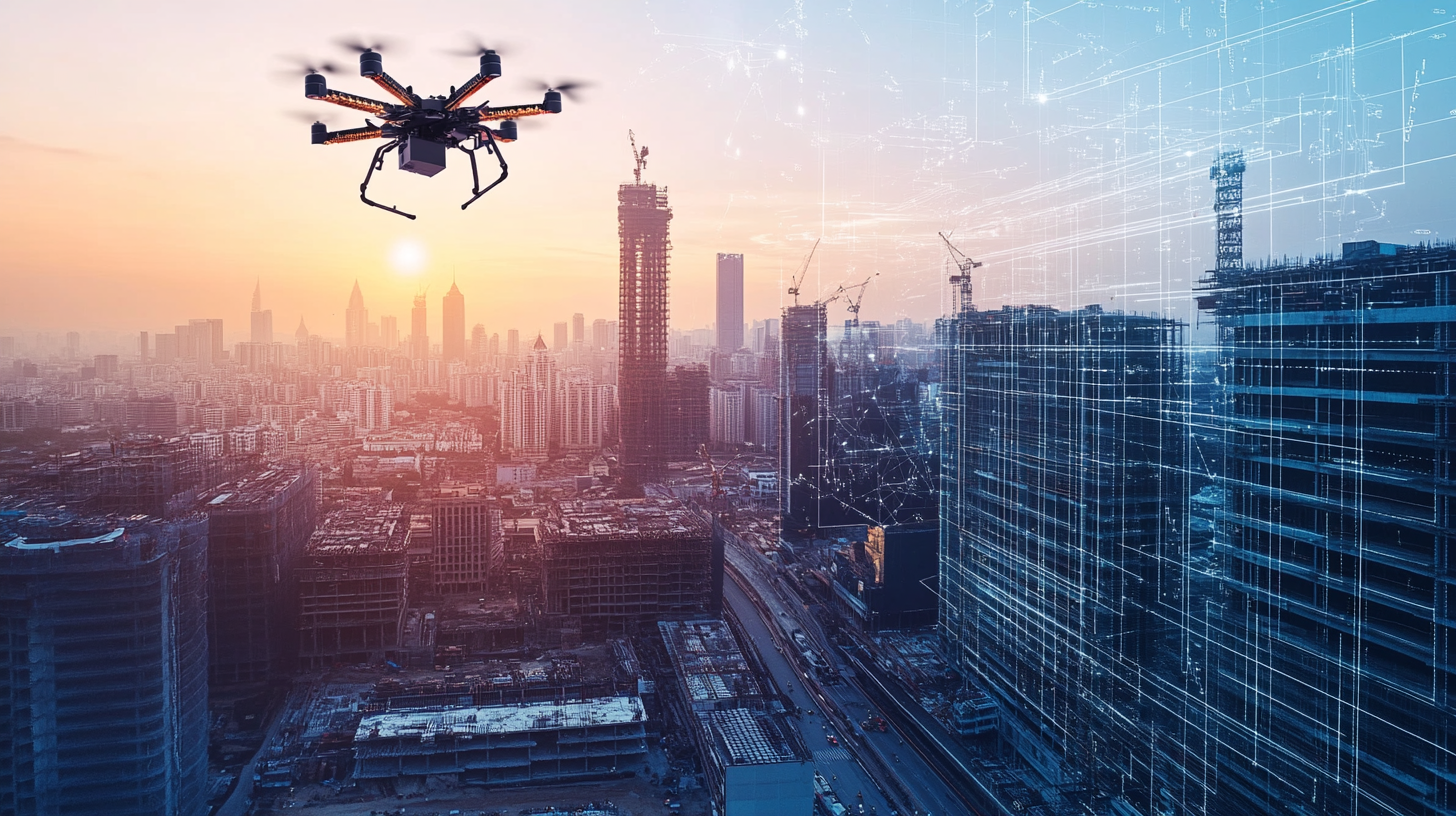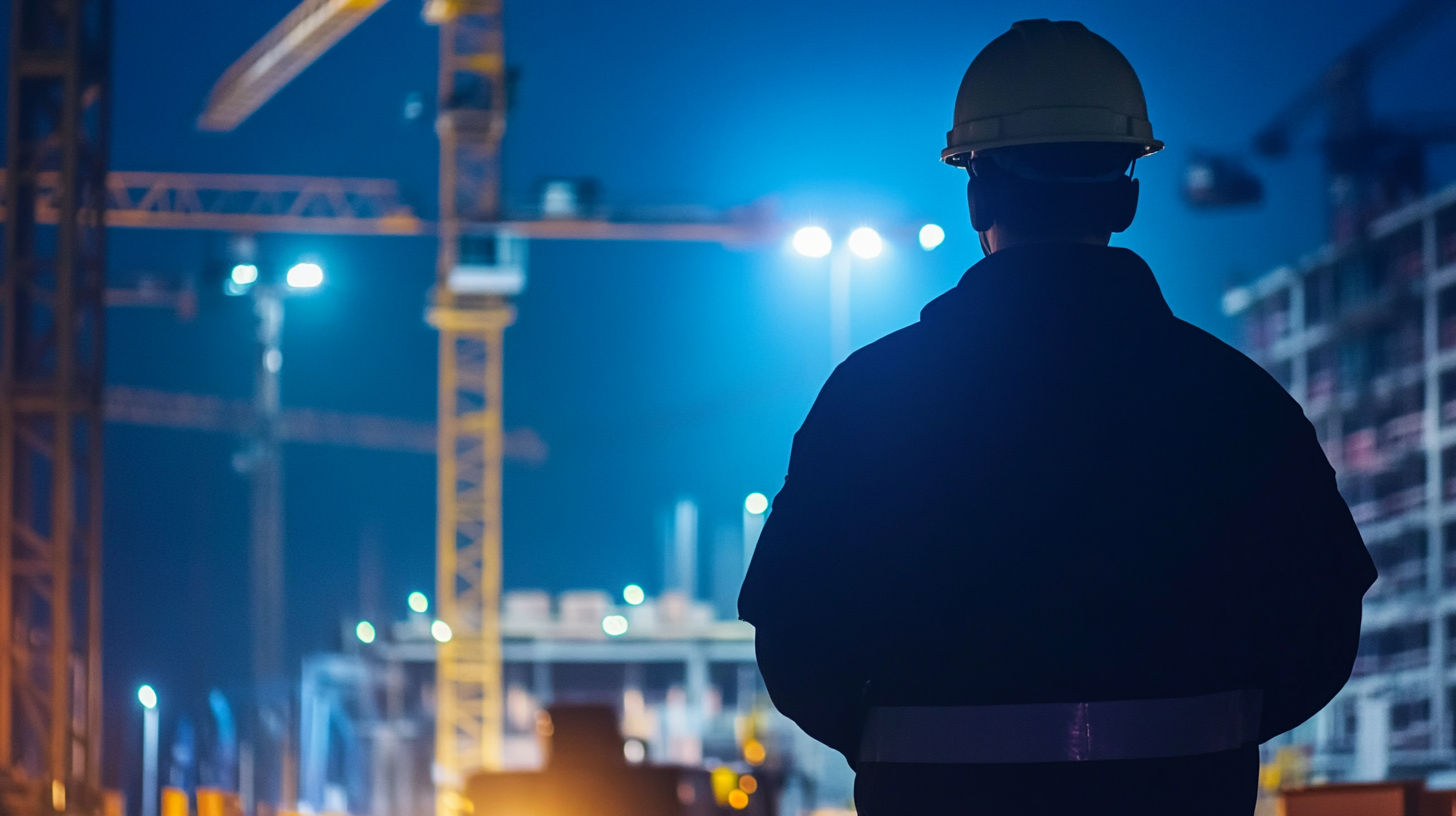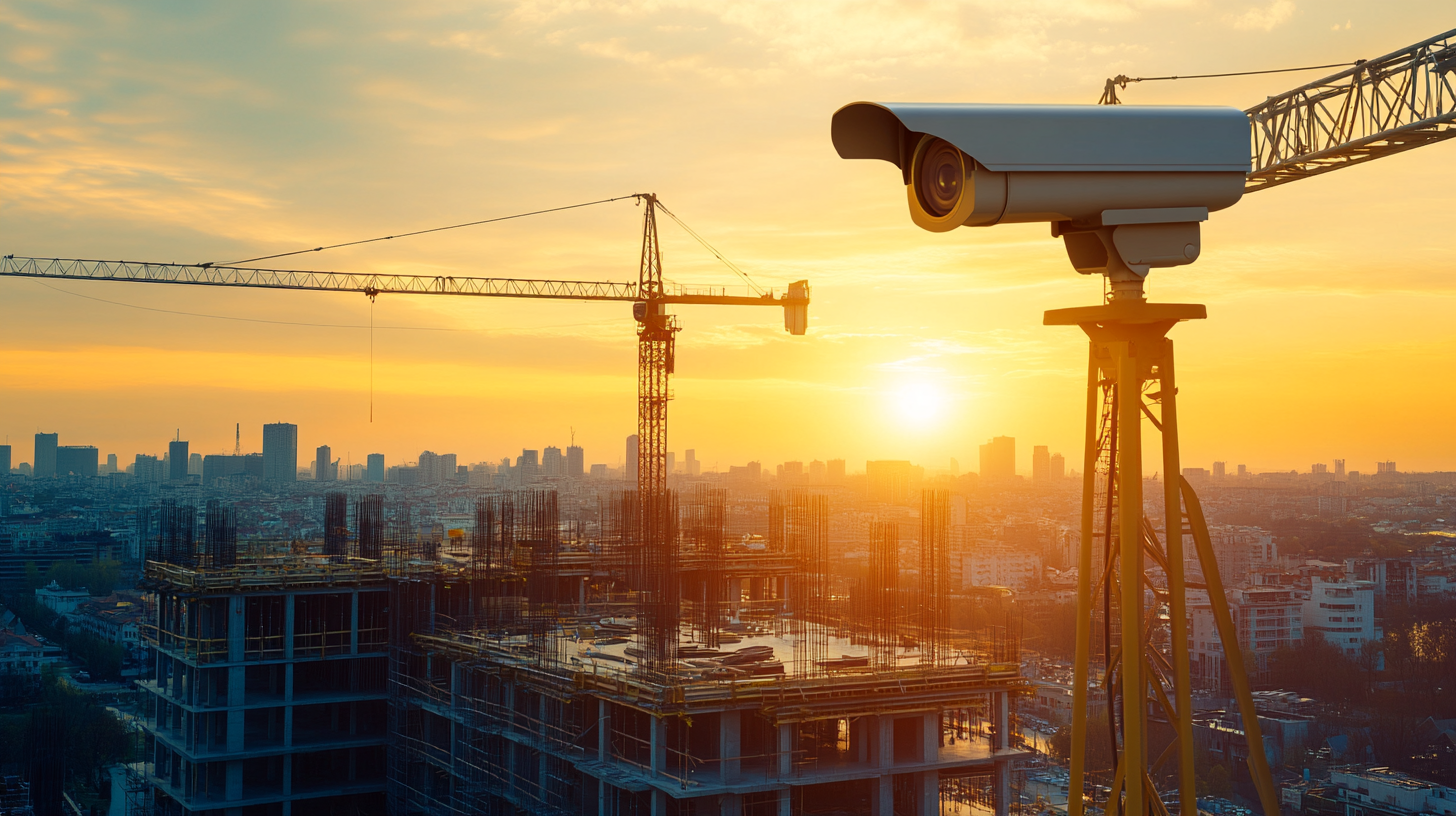Understanding the Features and Applications of Construction Site Surveillance Systems and How to Choose the Right Solution
The construction industry has increasingly recognized the vital role of construction site surveillance in enhancing security, safety, and operational efficiency. According to a report by the National Association of Home Builders, approximately $1 billion worth of construction equipment is stolen each year in the United States alone, underscoring the necessity for robust surveillance systems. Furthermore, a survey conducted by Research and Markets forecasts that the global construction surveillance market will grow substantially, with a projected compound annual growth rate (CAGR) of over 10% from 2021 to 2026. This trend illustrates not only the growing demand for effective monitoring solutions but also highlights the importance of integrating advanced technologies to safeguard valuable assets on construction sites.
Choosing the right construction site surveillance system can be a daunting task, considering the multitude of options available. With the advent of smart technologies such as AI-driven analytics and cloud-based monitoring, stakeholders must evaluate various features and applications to ensure they select a system that best meets their specific needs. By understanding the critical components and benefits of contemporary surveillance technologies, project managers and construction firms can protect their investments and foster safer working environments. In this blog, we will explore the essential features of construction site surveillance systems, their applications, and provide guidance on making an informed decision tailored to individual project requirements.

Key Features of Modern Construction Site Surveillance Systems
Modern construction site surveillance systems have become indispensable for enhancing security and ensuring safety on construction projects. The key features of these systems not only help in monitoring activities but also provide critical data for decision-making. One of the primary features of contemporary surveillance systems is real-time video monitoring. This allows site managers to keep an eye on operations and respond promptly to any incidents, whether they involve unauthorized access or safety violations. With high-definition cameras and night vision capabilities, these systems ensure comprehensive coverage in various lighting conditions. Another notable feature is the integration of artificial intelligence (AI) and analytics. Advanced surveillance systems can process video feeds to detect unusual behaviors or patterns that may signal potential issues, such as safety hazards or theft. This proactive approach allows for quick intervention and can significantly reduce the risk of accidents or material loss. Additionally, many systems now come equipped with mobile access, enabling construction managers to monitor sites remotely via smartphones or tablets, providing flexibility and enhancing operational oversight. Moreover, smart surveillance systems can incorporate environmental sensors that monitor conditions such as noise levels, temperature, and air quality. This information is essential not just for compliance with safety regulations but also for maintaining a healthy working environment. By choosing a system that includes these key features, construction managers can create a safer and more efficient worksite, leveraging technology to address challenges in real time and ultimately improving overall project outcomes.

Advantages of Implementing Surveillance in Construction Projects
Surveillance systems have become an integral part of construction site management, offering a multitude of advantages that streamline operations and enhance safety. Implementing surveillance technology helps in deterring theft and vandalism, which are often plaguing issues in construction projects. High-value equipment and materials are frequently targets for criminals, but visible camera systems can significantly reduce the likelihood of theft, protecting investments and minimizing loss.
Moreover, surveillance aids in ensuring compliance with safety regulations and protocols. By monitoring site activities, project managers can identify unsafe practices and intervene before accidents occur. This proactive approach not only safeguards workers but also mitigates potential legal liabilities associated with workplace incidents. Additionally, video footage can provide invaluable evidence in case of disputes or accidents, offering clarity and transparency in challenging situations.
Another key advantage is the enhancement of productivity through remote monitoring. Construction managers can oversee the site from anywhere, ensuring that projects remain on schedule and resources are used efficiently. This capability allows for real-time decision-making, which can help in addressing issues promptly and keeping the project on track. In conclusion, incorporating surveillance systems in construction projects yields significant benefits, creating a safer, more efficient, and compliant working environment.

Different Types of Surveillance Solutions for Construction Sites
When it comes to safeguarding construction sites, selecting the right surveillance solution is paramount. There are several types of surveillance systems available, each offering unique features tailored to meet the specific demands of construction environments. Among the most popular options are traditional CCTV cameras, which provide real-time monitoring and can be linked to a central control room. These systems are beneficial for deterring vandalism and theft, as well as for ensuring the safety of workers on-site.
In addition to CCTV, wireless surveillance solutions have gained traction, offering flexibility and ease of installation. These systems can be rapidly deployed and relocated as construction progresses, adapting to the changing layout of the site. With advancements in technology, many wireless cameras now come equipped with motion detection and night vision capabilities, enhancing security after hours when construction activity is minimal.
Another innovative option is the use of drones for aerial surveillance. Drones can cover large areas quickly and provide a comprehensive view of the entire site. This allows for real-time inspections and can help in monitoring progress, ensuring that construction adheres to timelines and safety standards. Furthermore, their ability to capture high-resolution images and videos can be invaluable for documenting compliance or resolving disputes.
Ultimately, choosing the right surveillance solution involves assessing the specific needs of your construction site, including size, layout, and the level of monitoring required. With the right system in place, you can significantly enhance the security and operational efficiency of your construction projects.

Factors to Consider When Choosing a Surveillance System
When selecting a surveillance system for a construction site, several critical factors should be weighed to ensure optimal security and efficiency. One of the foremost considerations is the type of technology utilized in the system. Options include traditional CCTV cameras, advanced IP cameras, and smart surveillance systems equipped with artificial intelligence. Each type has its own advantages and limitations, making it essential to assess the specific needs of the site, including the size, layout, and potential security threats.
Another crucial element to consider is the system’s integration capability with existing security measures. A surveillance system that can seamlessly integrate with access control, alarms, and other security technologies enhances overall protection. Furthermore, factors such as video storage solutions, either cloud-based or local, should be evaluated based on the expected footage retention duration and accessibility.
Moreover, the scalability of the surveillance system is essential for adaptive growth. As construction projects often evolve, having a system that can expand and adapt to changing needs without requiring a complete overhaul is advantageous. Lastly, training and support provided by the vendor should not be overlooked; comprehensive training ensures that staff can effectively utilize the surveillance tools, enhancing the system's value in securing the construction site.
Best Practices for Maintaining Security and Efficiency on Construction Sites
Construction sites face myriad challenges that require robust security and efficiency measures. To tackle these issues effectively, solution deployment during different construction phases, such as pre-construction, construction, and post-construction, is crucial. Leveraging project management tools, risk management strategies, and supply chain optimization can significantly enhance operational efficiency. For instance, utilizing cloud-based project management systems enables real-time collaboration and enhances data accessibility, which is essential in managing the dynamic workflow of construction sites.
As we move towards more advanced architectural practices, integrating artificial intelligence (AI) technologies is becoming increasingly vital. These AI-driven solutions facilitate enhanced security measures, predictive maintenance, and effective risk management throughout the construction phases. Reports indicate that AI can reduce project costs by up to 20%, streamlining processes that traditionally plagued the industry. Furthermore, the advent of smart construction technologies showcased at international expos, such as robotics and AI safety systems, indicates a strong shift towards safer and more productive job sites.
Specific metrics reveal that implementing construction site surveillance systems can reduce incidents of theft and vandalism by as much as 50%. Therefore, organizations looking to maintain security and efficiency must focus on selecting the right surveillance solutions that align with their specific project requirements. As the construction landscape evolves, these systems not only safeguard assets but also contribute significantly to overall project success, making them indispensable in contemporary construction practices.
